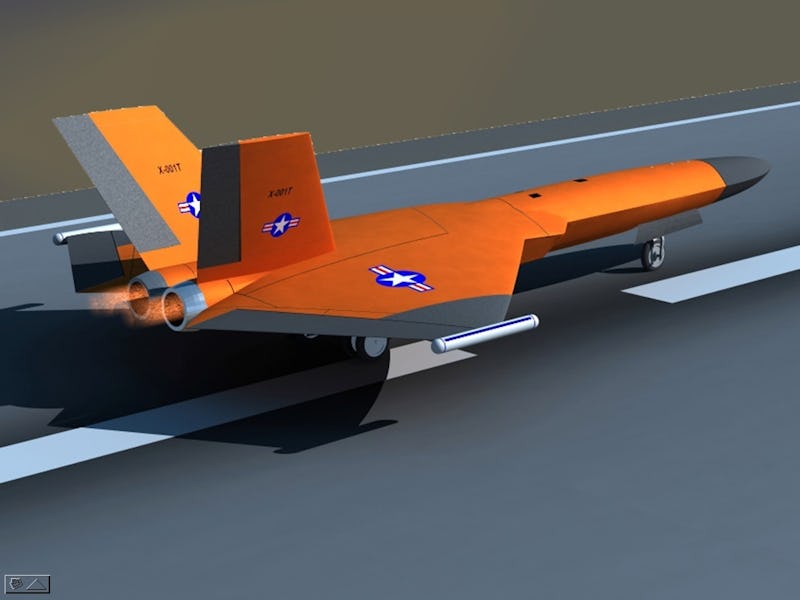Stealth Fighter Designed by Cadets Could Save the Air Force Millions
The light 5GAT could have all the characteristics of advanced fighter jets at a sliver of the budget.

A group of aeronautical engineering students with a mere $2,000 budget may have just created the Air Force’s newest stealth fighter.
The Air Force is reportedly developing a full-scale prototype of the craft, known as the 5GAT, first conceptualized by cadets in response to a 2003 call for designs to develop an aerial target with stealth capabilities.
The idea was to keep America competitive with the fifth-generation aircraft coming into active warfare. Rather than sinking money into the costly process of turning an F-22 or the like into what’s essentially a target drone, the Air Force wanted to see how cheaply they could build one from the ground up that still behaved like a full-scale stealth fighter.
The 5GAT was designed by Air Force cadets for only $2,000.
The cadets started to crack the problem in Spring of 2008 when one of their designs held its own in testing using the relatively cheap engines of T-38 trainer jets. That model is now known as the Fifth Generation Aerial Target after years of development. The 5GAT’s weight alone (1,200 pounds less than the baseline model) represents a savings of about $1,000,000 per plane. It’s not just cheap, it’s a hell of an aircraft, performing with “superior level-flight characteristics” and “superior stability characteristics” according to a 2011 AIAA paper, matching the capabilities of advanced fighter jets.
The Air Force has been increasingly attracted to inexpensive fighters in recent years, investing in cheap “Gremlin” drones that are built with the expectation they’ll be blown up, and sinking as much as $14 million per Reaper drone even as electrical failures have them dropping out of the sky.
War Is Boring notes that another good aspect of the 5GAT is that the Air Force still owns the contract on it, meaning it can hold periodic competitions and tests to find ways to drive costs even lower and make it more efficient.